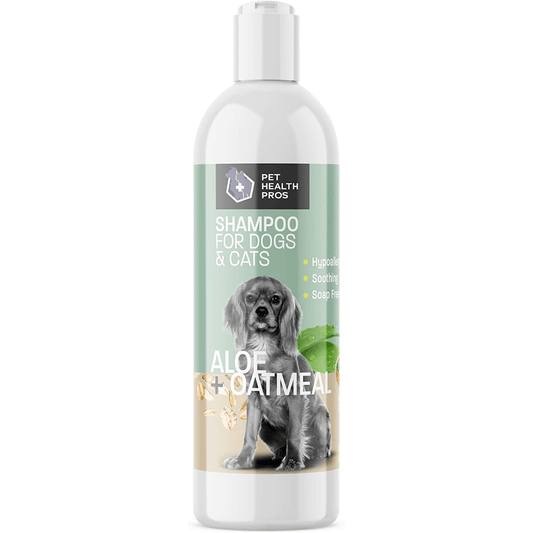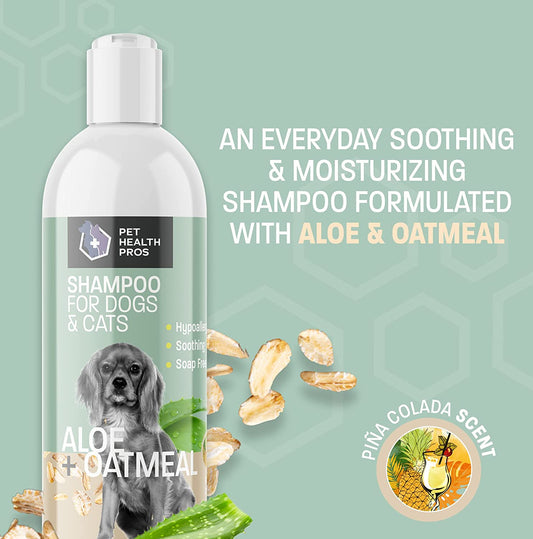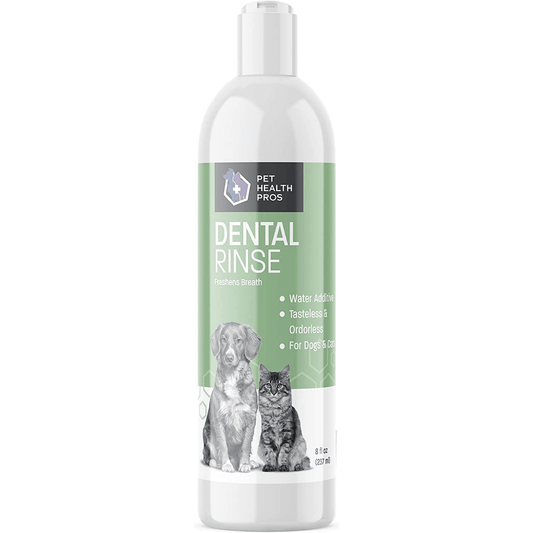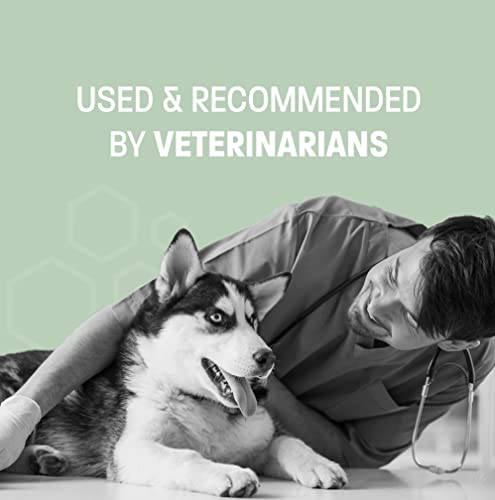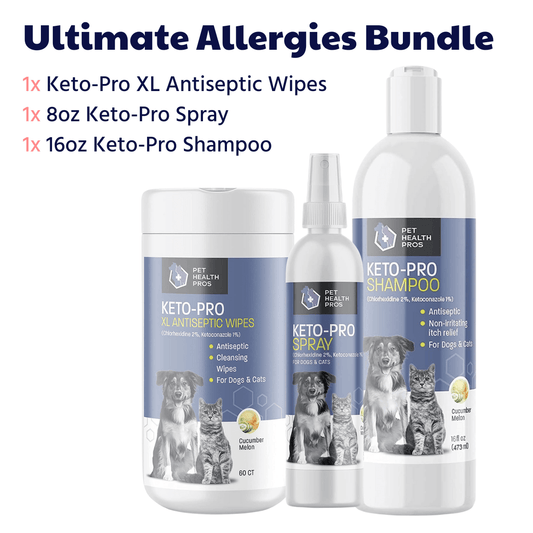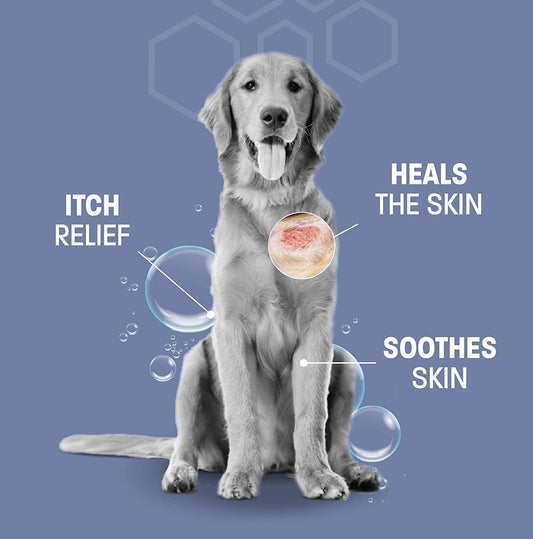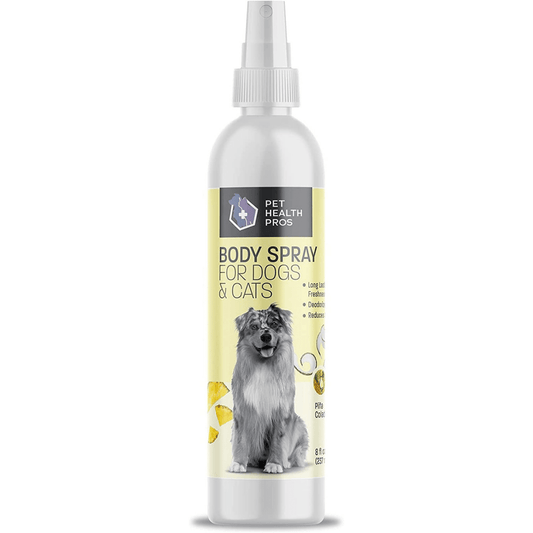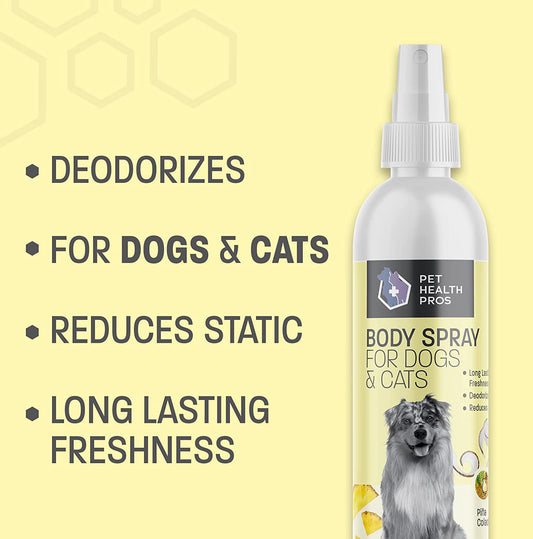The perpetual itch-scratch cycle is a sign of deep discomfort. Explore how Pet Health Pros' medicated product range is designed to give your dog the much-needed respite and healing.
Hot spots can be a real nuisance for dogs, making them itch and scratch like crazy! But don't fret, here's a guide to help break the itch-scratch cycle. Let's get started!
Hot spots are patches of red, moist and painful skin that may appear anywhere on a dog's body. They can start as small irritations, but if not treated, they can get worse quickly. The cause can be anything from allergies, skin infections, insect bites, or excessive licking and biting. It's important to identify the underlying cause to decide the right treatment.
To manage hot spots, the area needs to stay clean and dry. Wash it with mild antiseptic solutions recommended by the vet to stop any infection. Applying topical treatments like sprays or creams can help ease the itching and reduce inflammation. In bad cases, oral antibiotics may be needed.
Your pup must not scratch or bite the area while healing. E-collars or Elizabethan collars can be used to stop this. Regular grooming and good hygiene can help prevent it occurring again.
Pro Tip: If you spot any signs of hot spots, talk to the vet straight away. Early intervention can stop it getting worse and will help it heal faster.
By understanding the cause and using the right treatments, you can manage hot spots and give your furry friend relief. Don't forget to speak to the vet for advice tailored to your pet's needs. Together, we can break the itch-scratch cycle and make sure our furry friends have a happy, itch-free life!
Understanding hot spots
Hot spots are also known as acute moist dermatitis. They appear as red, itchy and painful patches. Causes may be allergies, insect bites or skin conditions. Dogs with thick coats or those that lick or scratch a lot are more vulnerable.
If not treated, they can worsen and lead to inflammation, infection and hair loss. Knowing the cause is important. Vet help can identify allergies or other factors. Treatment involves cleaning the area and keeping it dry. Meds or antibiotics can reduce inflammation.
Managing hot spots includes preventing the dog from scratching. An Elizabethan collar or positive reinforcement can help. Understanding these points can help us address this condition better for our furry friends. Identifying the cause and managing the environment can break the itch-scratch cycle and give our dogs relief.
Identifying the causes of hot spots in dogs
Hot spots in doggos can have various causes. Knowing these causes is essential for managing and treating the condition. Allergies, caused by pollen or fleas, can be one cause. Another is too much moisture or humidity - this is a perfect spot for bacteria and fungi on the pup's skin. Hot spots may also be a sign of a medical condition, such as hypothyroidism or Cushing's disease. Knowing the exact cause of your pup's hot spots helps in creating a treatment plan.
Pups with long or thick fur are more prone to hot spots due to the retained moisture in their skin. Also, dogs that scratch or lick themselves can develop hot spots due to self-inflicted skin trauma. Therefore, it's essential to groom them regularly, brush their coat, bathe them with mild shampoos, and dry them properly after swimming or walks in the rain.
Moreover, behavioral issues can be a cause of hot spots. Dogs that feel stressed, anxious, or bored may scratch or chew their skin leading to hot spots. To break this cycle, identify the stressors or anxieties and address them.
Remember: If your pup often has hot spots, take them to a vet for a thorough checkup. The vet can help you identify any underlying conditions and recommend the right treatments.
Steps for managing hot spots:
Hot spots on dogs can cause big discomfort. There's help though! Here are steps to manage and ease this condition.
Step 1: Spot and Clean. Check your pup for red, swollen, or moist patches. Use an antiseptic solution to remove any dirt or bacteria.
Step 2: Help Healing. Dry the spot by patting with a towel. Use an Elizabethan collar if needed to stop licking and scratching.
Step 3: Treat Topically. Get medicated spray or cream from the vet. Follow their instructions.
Hygiene is key! Regularly groom your dog and check for signs of irritation. If you spot one, deal with it fast.
When to seek veterinary assistance
It's vital to identify the right time to get professional help for your pup's hot spots. Here are some points to consider when deciding if a vet's help is needed:
- If no improvements in two days after home treatment, get help.
- Vet help if hot spot grows or spreads.
- Immediate vet attention with pus or smell.
- If pup scratches/bites despite efforts, seek help.
- Vet if underlying condition is present.
Also, note changes in behavior or appetite. Reaching out for expert advice can give the best result for your four-legged friend.
Pro Tip: Take pics of the affected area before seeking vet assistance. This helps the vet assess severity and progression accurately.
Conclusion
Don't let your pet suffer in silence. Turn to Pet Health Pros for a solution that speaks volumes in care and relief.
To conclude, acting quickly and effectively is key to managing hot spots in dogs. Treatments and remedies can break the itch-scratch cycle and provide relief to your furry companion.
- First, it is important to identify the source of the hot spots, be it allergies, infections, or parasites.
- Next, give immediate relief via topical treatments and oral medications to ease the discomfort and reduce inflammation.
- Finally, keep the affected area clean and dry to promote healing and avoid recurrences.
Furthermore, hot spots can greatly affect a dog's quality of life. The chronic itching and scratching not only cause physical pain but also psychological distress. Therefore, taking a proactive approach to these skin issues is essential for both physical and mental wellbeing. PetMD reveals that 15% of dogs have some form of skin allergies or dermatitis, making hot spots a common issue with pet owners.
Frequently Asked Questions
FAQs about Breaking the Itch-Scratch Cycle: Guide to Managing Hot Spots
1. What is a hot spot on a dog?
Hot spots are moist, red, and itchy patches of skin that occur on dogs. They are often caused by excessive scratching or biting due to irritants, allergies, infections, or flea infestations.
2. How can I treat a hot spot at home?
If the hot spot is small and not too severe, you can start by trimming the hair around the affected area and gently cleaning it with a mild antiseptic solution. Applying a topical antibiotic ointment or hydrocortisone cream can also help alleviate the itching and promote healing. However, if the hot spot worsens or doesn't improve within a few days, it's best to consult a veterinarian.
3. Are there any natural remedies for hot spots?
Some natural remedies that may provide relief for hot spots include applying aloe vera gel, chamomile tea compresses, or coconut oil to the affected area. However, it's important to note that these remedies may not work for every dog, and consulting with a vet is still recommended for proper diagnosis and treatment.
4. Can hot spots be prevented?
While it may not always be possible to prevent hot spots, there are measures you can take to minimize the risk. Regular grooming, avoiding known allergens, maintaining a healthy diet, and preventing flea infestations through proper flea control are some ways to reduce the likelihood of hot spots.
5. What if my dog keeps scratching the hot spot?
If your dog continues to scratch the hot spot, it's important to prevent further irritation. Using an Elizabethan collar (also known as a cone) can effectively prevent them from accessing the affected area and worsening the condition. Consulting a veterinarian for additional guidance is advised.
6. How long does it take for a hot spot to heal?
The healing time for a hot spot varies depending on its severity and the effectiveness of treatment. Mild cases may heal within a week or two, while more severe hot spots can take several weeks to completely heal. Consistency in treatment and proper care are key factors in ensuring a faster healing process.

